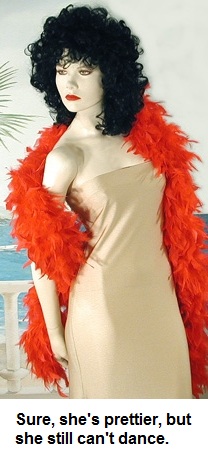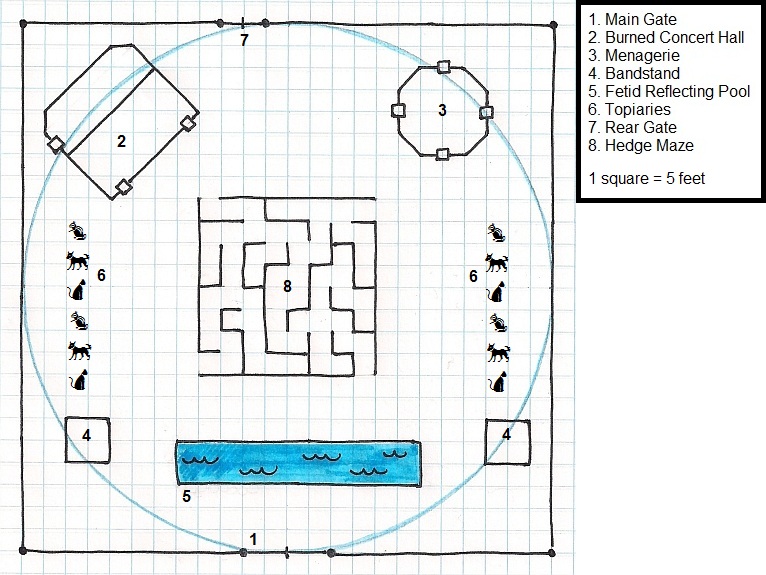M Is for Monks
I’ve always liked monks. All the way back to 1E, I’ve liked monks. I liked the 1E Player’s Handbook, and I really liked the 1E monk presented in an issue of Dragon that I still have buried away somewhere in my library (but that I’m too lazy right now to look for). 1E’s Oriental Adventures also had a great monk, especially considering the DIY martial arts rules contained in that book.
Sure, there are so-called purists who object to having Asian-style mystic martial artists muddying up the pristine waters of their medieval Europe simulationist campaigns. They can leave the monk out easier than most gamers could make up a monk class to include in their games had the various designers down through the years not already done so. So, while I can appreciate the devotion to genre that would exclude monks from a campaign, I don’t think that monks should be excluded from the game per se. (I’m of the same opinion about psionics; if you don’t like them, don’t use them, but don’t expect my gaming choices to be constrained by your preferences, and vice versa, but I digress.)
A quick search of threads over at the Paizo Pathfinder boards reveals what appears to be widespread dissatisfaction with monks as they’re currently designed. I think this dissatisfaction isn’t really that widespread, but instead is driven by a rather small number of people whose complaints about the monk range from astute to zany. As for me, I think the monk is generally a fine class, but I would make a few small tweaks.
Let’s start with some boilerplate fluff text:

For the truly exemplary, martial skill transcends the battlefield—it is a lifestyle, a doctrine, a state of mind. These warrior-artists search out methods of battle beyond swords and shields, finding weapons within themselves just as capable of crippling or killing as any blade. These monks (so called since they adhere to ancient philosophies and strict martial disciplines) elevate their bodies to become weapons of war, from battle-minded ascetics to self-taught brawlers. Monks tread the path of discipline, and those with the will to endure that path discover within themselves not what they are, but what they are meant to be.
Role: Monks excel at overcoming even the most daunting perils, striking where it’s least expected, and taking advantage of enemy vulnerabilities. Fleet of foot and skilled in combat, monks can navigate any battlefield with ease, aiding allies wherever they are needed most.
Just as I think that a character’s background fluff should drive that character’s crunchy game mechanic choices, so too do I think that a class’s features should dovetail nicely with that class’s descriptive text. The PF monk fits his described role well. He is mobile and able to utilize combat maneuvers to put enemies at a disadvantage. In these respects, the monk does seem to be an artist of things martial. Where I see the monk falling down a bit is in some klunky rules text, specifically flurry of blows, which should be the monk’s signature attack ability.
Flurry of Blows (Ex): Starting at 1st level, a monk can make a flurry of blows as a full-attack action. When doing so he may make one additional attack using any combination of unarmed strikes or attacks with a special monk weapon (kama, nunchaku, quarterstaff, sai, shuriken, and siangham) as if using the Two-Weapon Fighting feat (even if the monk does not meet the prerequisites for the feat). For the purpose of these attacks, the monk’s base attack bonus from his monk class levels is equal to his monk level. For all other purposes, such as qualifying for a feat or a prestige class, the monk uses his normal base attack bonus.
At 8th level, the monk can make two additional attacks when he uses flurry of blows, as if using Improved Two-Weapon Fighting (even if the monk does not meet the prerequisites for the feat).
At 15th level, the monk can make three additional attacks using flurry of blows, as if using Greater Two-Weapon Fighting (even if the monk does not meet the prerequisites for the feat).
A monk applies his full Strength bonus to his damage rolls for all successful attacks made with flurry of blows, whether the attacks are made with an off-hand or with a weapon wielded in both hands. A monk may substitute disarm, sunder, and trip combat maneuvers for unarmed attacks as part of a flurry of blows. A monk cannot use any weapon other than an unarmed strike or a special monk weapon as part of a flurry of blows. A monk with natural weapons cannot use such weapons as part of a flurry of blows, nor can he make natural attacks in addition to his flurry of blows attacks.
I don’t like these rules. They’re unnecessarily complicated simply by virtue of making flurry of blows work like the Two-Weapon Fighting feat chain, which itself is unnecessarily complicated. I would prefer something a bit easier to figure out, such as, from 1st-7th levels, a monk can make one additional attack using any combination of unarmed strikes or attacks with a special monk weapon, and all such attacks suffer a -2 penalty. At 8th level, the monk gets two additional attacks, all with a -2 penalty. At 15th level, he gets three additional attacks, all at a -2 penalty. Now remove the line about the monk’s BAB from his monk class being equal to his monk level with these attacks. Thus, a 6th-level monk can make one attack with a +4 BAB or two attacks with a +2 BAB each (instead of flurrying for +4/+4/-1).
Next, take an idea from Trailblazer by Bad Axe Games, and give the monk a “centered bonus” that applies when a monk is not wearing armor, not using a shield, not carrying more than light load, and not using a weapon other than those listed above. This centered bonus applies to attack rolls as a competence bonus. From 1st through 4th level, the bonus is +1; 5th through 8th, +2; 9th through 12th, +3; 13th through 16th, +4; and 17th or higher, +5.
Back to that 6th-level monk: Without a STR bonus or any other adjustments, his flurry of blows attack bonuses are +4/+4 (including the centered bonus) for two attacks using his unarmed strikes, monk weapons, and/or designated combat maneuvers. At 12th level, he’d be flurrying for +10/+10/+10/+10 (including the +3 centered bonus).


 About this feat, Shane wrote, “Pathfinder inherited the bow’s status as king of ranged weapons. While there are specialized builds that help make other distance-weapons usable, I was surprised that nothing had been done to let thrown weapon-wielders close the gap in terms of available range increments. I was initially going to set a Strength prerequisite on this feat, the pretext being that you needed to be strong to hurl a weapon so far. However, that seemed too punitive with regard to alchemists and other characters that are likely to have thrown weapons but not necessarily a high Strength. Given that thrown weapons have shorter range increments than projectile weapons, and how few ranged combats take place at more than five range increments anyway, it seemed like a good idea to give this feat the broadest availability possible.”
About this feat, Shane wrote, “Pathfinder inherited the bow’s status as king of ranged weapons. While there are specialized builds that help make other distance-weapons usable, I was surprised that nothing had been done to let thrown weapon-wielders close the gap in terms of available range increments. I was initially going to set a Strength prerequisite on this feat, the pretext being that you needed to be strong to hurl a weapon so far. However, that seemed too punitive with regard to alchemists and other characters that are likely to have thrown weapons but not necessarily a high Strength. Given that thrown weapons have shorter range increments than projectile weapons, and how few ranged combats take place at more than five range increments anyway, it seemed like a good idea to give this feat the broadest availability possible.” In its full splendor, the pleasure garden was a wonder to visit. Townsfolk once congregated there regularly to enjoy the various entertainments presented in the small concert hall or upon one of the several bandstands. The cleverly trimmed topiaries delighted children, and the centerpiece, a hedge maze, provided fleeting privacy for young lovers to steal a kiss or two. All of this was before the tragic fire in the concert hall that claimed the lives of several townsfolk. One of those killed was a gnome lass betrothed to an emotionally unstable illusionist. The couple had argued earlier that day. The lass went to the pleasure garden alone while her beau sulked at home. When he found out his love had died, the illusionist was inconsolable. He took his own life in the center of the hedge maze a couple of days later. His anguished spirit now jealously guards the decaying pleasure garden.
In its full splendor, the pleasure garden was a wonder to visit. Townsfolk once congregated there regularly to enjoy the various entertainments presented in the small concert hall or upon one of the several bandstands. The cleverly trimmed topiaries delighted children, and the centerpiece, a hedge maze, provided fleeting privacy for young lovers to steal a kiss or two. All of this was before the tragic fire in the concert hall that claimed the lives of several townsfolk. One of those killed was a gnome lass betrothed to an emotionally unstable illusionist. The couple had argued earlier that day. The lass went to the pleasure garden alone while her beau sulked at home. When he found out his love had died, the illusionist was inconsolable. He took his own life in the center of the hedge maze a couple of days later. His anguished spirit now jealously guards the decaying pleasure garden.